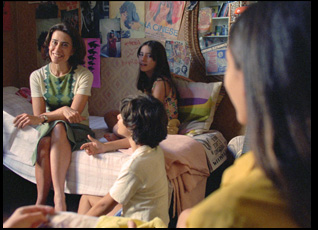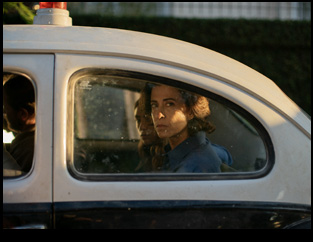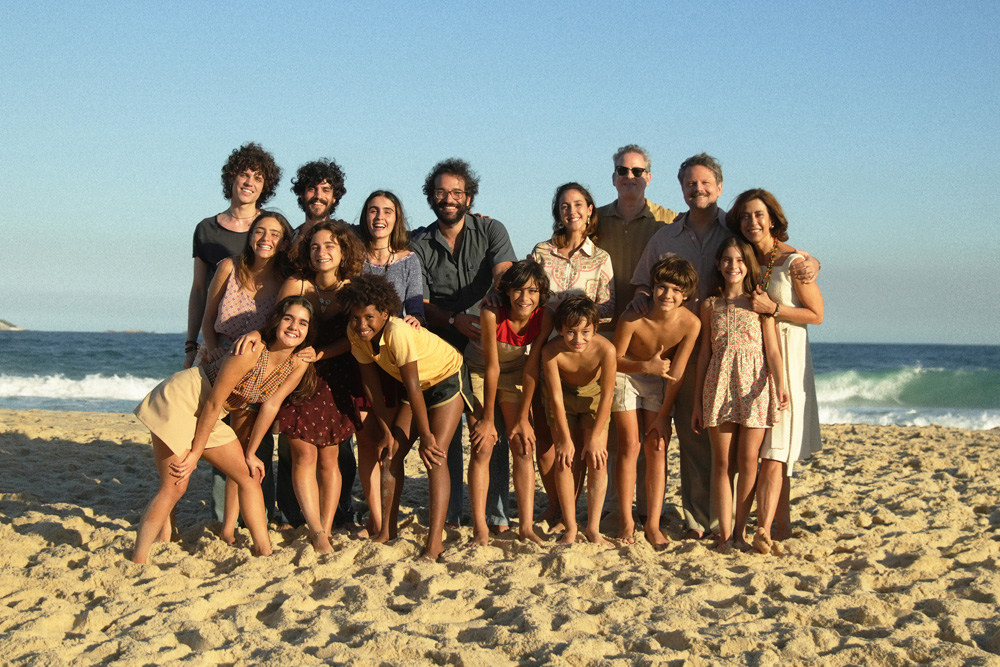A persistent question in “I’m Still Here” becomes what will decent people do to help others when faced with tyranny, something that Walter Salles can now confidently answer for himself. Back in 2015, the “Motorcycle Diaries” director was given a copy of the book of the same name that was written by his friend Marcelo Rubens Paiva, though he was intimately familiar with the story it told already when he had spent some of his youth in Rio de Janeiro at the family’s house. Paiva recounted the disappearance of his father Rubens Paiva, a former congressman whose opposition to a military dictatorship was noted during his time in office during the 1960s, but by 1971 could expect a quiet life with his family as he went back to work as a civil servant. After a knock at the door, Rubens was never seen again, leaving a behind a gaping hole in the family that like so many others in the country could only wonder what happened to their loved ones as President Emílio Garrastazu Médici sought to weed out anyone with ties to the Labour Party.
Though his memories of the time were vivid, Salles didn’t exactly need to think back to be reminded of them when work started on a script not long before the far-right rose again in Brazil as the country was on the verge of former military captain Jair Bolsonaro after his most formidable opponent, now President Luiz Inácio Lula da Silva, was imprisoned on specious corruption charges. It would not be easy to produce a film such as “I’m Still Here” under those conditions, but nonetheless Salles proceeded with the tight-knit crew of collaborators he’s been collecting over the years, able to look around on the set of his latest and see Fernanda Torres, the lead of his 1995 film “Foreign Land,” given the role of her career here as Eunice, the wife of Rubens (Selton Mello) who refuses to let up on a search for her husband that spans decades and prevents her household from falling apart.
“I’m Still Here” is powerful when it doesn’t only suggest that time is on the side of the righteous, but can actively demonstrate it as the full force of the collaborations that Salles built can be felt throughout, the work of a masterful crew honing a complicated story of a family that each reacts to the absence of its patriarch differently as well as the complex sociopolitical situation of the moment into a effortlessly gripping drama. With the film now beginning its U.S. theatrical run after becoming a sensation at the fall festivals and Brazil’s official entry to the Oscars, Salles spoke about how developing a family off-screen led to such an authentic one on it, building a home that could evoke the feeling of living in Brazil at the time and what emboldened him to take creative risks.

Coming from other films that I made — original stories like “Central Station” or adaptations like “The Motorcycle Diaries” — these were very dear projects to me, but not ones I had had a personal connection with and in the case of “I’m Still Here,” I was entering another territory because of the relationship I had with the family. For two years [in my youth], I spent time weekend after weekend with the family at the heart of the film. It was the last place on earth that I thought that could be hit by a tragedy. But during military dictatorship, anything can happen and it did. And after that moment, the story of that family became a story of resilience, resistance and reinvention. I was very touched by that, but a little bit intimidated by the scope and the magnitude of the task. In fact, when Marcelo Rubis Paiva, the second younger kid in the family, who’s a fantastic writer, published a novel about the journey of the family throughout 40 years, and singling out his mother as the main character in the survival of the family, I was completely taken by it.
When I read it, I was moved for two or three days. I could barely think of anything else. I was a little bit in doubt if I should adapt it, having known the family so personally. Sometimes it’s easier if you have some kind of a distance, but Marcelo really invited me in by saying, “You know the story from within, so let’s move on together.” He was very close to us during the whole adaptation. I interviewed everyone who is still alive, including [Marcelo’s] sisters w and friends, friends of friends, and this took time. But another thing that explains the seven years period of the adaptation is the fact that Brazilian cinema became silent for four years due to the pandemic, but also due to an extreme right-wing regime that didn’t exactly favor the arts.

You have to start somewhere, and I thought that that would be a really good approximation, so we did that to understand a little bit the gestalt of the family. But I think that for Fernanda and Selton and everybody else, it was fundamental. In my head, I had the moving images of those photos and having witnessed part of that story personally, I thought of those images as Super 8, and this is why you have the Super 8 [footage] in there, so that you could breathe life into it. What was also very important, just immediately after doing the photographs, was to bring the family together in the house in which we filmed three to four weeks prior to the shoot. We literally lived in the house. We cooked in the house. We rehearsed in the house. We did tests in the house. The actors were invited to actually draw things on [the walls] in their rooms and select the posters they would like to see on the wall. That added texture and created a bond in the family before the film started and that was essential to reach something that I wanted to do. I didn’t want to portray a family that you would look at [from] a distance, but the opposite, I wanted to invite you to have the same experience I had as a teenager and to live with that family for the length of the film.

Yeah, it’s truly the eighth member of that family of seven,and being a house facing the sea, you had both the echoes of nature and the sirens and the helicopters that are typical of a military dictatorship, so it was the intertwining of all these sounds. I remember that house constantly with open windows. The door on that house didn’t have a lock, I remember it. And it was clear that it was a character since the beginning, but as we moved on, we realized there was much more potential than we ever thought. This is why we shot the final credit scene in the house [when it was] completely empty because this was about what that family could have been. This was about what the country could have been. This was about what that house would have been if it wasn’t lifeless due to the tragedy that happened in there.
It’s powerful on its own, but was even more so for me when I just think about all the collaborators that you’ve brought with you going all the way back to “Foreign Land” and this really seems like a pinnacle of working as a collective. What’s it like in that way to have as a document?
I was always drawn to cinema as an instrument for discovering the world. I love films made by film families. Truffaut did that in French cinema. Scorsese did that wonderfully and does that incredibly, incredibly well. Sean Penn does that as well. So to work with the same actors, but also with the same technicians from “Foreign Land” is like a godsend because cinema is fragile and what those collaborators bring to you is a form of assurance in which you can risk more. They allowed me to risk much more. To shoot a film with Fernanda Montenegro and Fernanda Torres together, it was something I was dreaming for a long, long time and it’s as if everything that we built during 30 years could merge into this one film that you saw.
“I’m Still Here” opens on January 17th in New York and Los Angeles before expanding.




